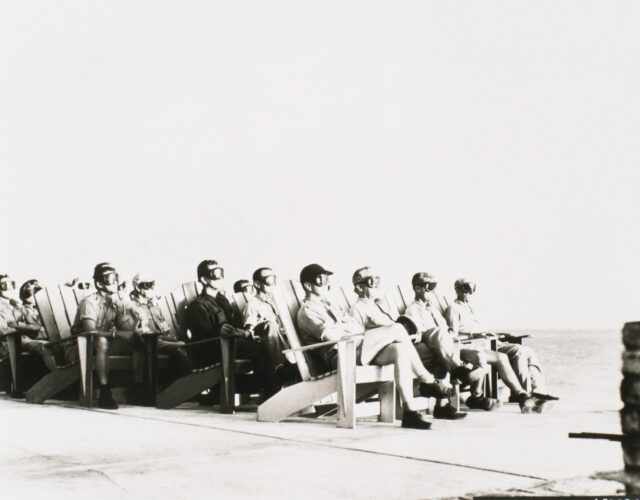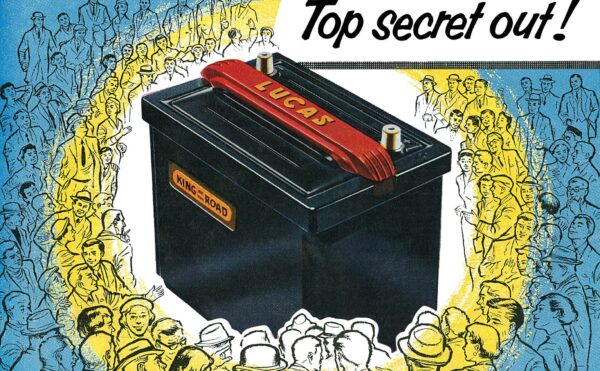In August 1950 a convoy of airplanes took off from a California military base, two of them carrying the makings of a nuclear bomb. One B-29 transported the bomb’s high-explosive casing; the other carried its enriched-uranium core. Together these components made a bomb more powerful than the one that devastated Nagasaki in 1945. The bomb was headed across the Pacific for possible deployment against the Communist army invading South Korea.
Commanding the transport was Brigadier General Robert F. Travis, who had led dozens of daring bombing raids against German targets during World War II. Travis led a quieter life now that the war had ended. He was well suited to a task that, on the surface, seemed mundane. Travis was expected to safely transport the bomb casing a few thousand miles, making sure the landing was so smooth and ordinary that it would keep his payload safe.
By the time Travis’s B-29 rolled down the runway of Fairfield-Suisun Army Air Base, it was late on August 5, a foggy and cool evening in central California. One resident of the base recalled sitting down to dinner with her husband. She heard engines droning overhead; one plane seemed to be losing altitude. Her husband sensed something wasn’t right, and he dropped to the floor, pulling his wife down with him.
During takeoff one of the plane’s four propellers had malfunctioned. Once in the air the plane’s landing gear would not retract, and a second propeller was reduced to partial power. With the plane weighed down with explosives, one failed engine, another with problems, and the wheels stuck, terror must have seized the cockpit.
The Secret Life of the Stockpile
In 1950 the most terrifying threats posed by nuclear weapons were just starting to become clear. One year earlier the Soviet Union had detonated its first nuclear bomb. It was early in the Cold War, and the superpower was embarking on a decades-long standoff with the United States—the age of fallout shelters and duck-and-cover drills. By the late 1960s the two countries would have tens of thousands of nuclear weapons, more than enough to annihilate the human race.
Other threats were less apparent to the public, however, and the government was careful to keep them that way. At Fairfield-Suisun Army Air Base, residents were never informed that the components of a nuclear bomb were being flown out of their backyard. Elsewhere in the United States huge laboratories refined nuclear-weapon technologies away from the public eye, while nuclear tests left fallout swirling through the atmosphere. The transport of radioactive materials to locations across the country—from uranium mines to laboratories to military bases—meant the U.S. nuclear program was a risk to almost everyone. An act of sabotage, a lab malfunction, or a plane crash might have threatened thousands of Americans without the Soviet Union lifting a finger.
It would be easy to assume that when the Soviet Union broke apart 25 years ago, most of these dangers went away. Some of them certainly did disappear: we don’t have to worry about military schemes like “Operation Chrome Dome,” which in the 1960s kept bombers carrying nuclear weapons flying across the United States, ready for instant retaliation.
But the challenges of maintaining, transporting, and safeguarding nuclear weapons remain—and in some ways these tasks have only become more difficult. The American nuclear arsenal is getting old, and international agreements prevent the construction of any replacement weapons. As a result the U.S. stockpile includes thousands of aging weapons that weren’t designed to last, yet can’t legally be detonated to make sure they still work.
The Age of Experimentation
Back in August 1950 the pilot of the B-29 tried guiding the plane back toward the runway, but the aircraft was nearly impossible to steer. Recognizing how dire the situation was, he tried to set the plane down as gently as he could. Only a few minutes after liftoff the crew readied for a crash landing.
The plane struck the ground hard. There was chaos in the cockpit as the plane rolled over, rolled over again, and then ripped in two. A handful of survivors crawled out through a window and—with the help of staff from a nearby building—tried dragging their comrades with them. But before all could be freed from the plane, the desert echoed with an explosion heard 30 miles away.
It was exactly five years since the United States had dropped an atom bomb on Hiroshima, killing tens of thousands of Japanese civilians. Now the high explosives inside the casing for a nuclear bomb had gone off on American soil. More than half the flight’s crew died that night. There was just one small comfort: at least the crash had involved high explosives instead of the bomb’s enriched uranium core. If a different plane had crashed that night, radioactive debris might have been scattered across the base, with far more unpredictable effects.
Brigadier General Travis was among the dead. He’d survived attacks by the Luftwaffe only to die at home. The accident that killed him highlighted new risks—both to soldiers and to the public—created by nuclear arsenals.
A few months after the plane crash another explosion made history, one state over in Nevada. On January 27, 1951, a nuclear bomb was dropped from a plane onto a dry lake bed in the newly designated Nevada Test Site. It was the first air-dropped nuclear bomb detonated in the United States. People reported seeing the explosion from as far as 100 miles away.
More than 80 nuclear weapons were set off above Nevada during the next 12 years. These tests projected American might, but also generated opposition among an eclectic alliance of environmentalists, scientists, and nonaligned countries. Their protests finally led to a ban on aboveground testing in 1963. Belowground, however, nearly 1,000 nuclear weapons were detonated in Nevada. Scientifically, these detonations served as an essential step in the cycle that included prototyping, assembling, and refining. Testing created the bridge between theory and practice.
According to Stephen Younger, a former weapons designer, scientists were able to reduce the size and improve the efficiency of nuclear weapons only because they conducted so many tests. “Hundreds of nuclear tests were required to refine the design,” he writes in his book The Bomb. After all, the design requirements of a nuclear bomb are absurdly stringent: “It must have a near perfect probability of working when needed and a probability of less than a million of accidentally exploding in the most severe accident.”
The practicality of testing was clear to military and political leaders in the context of a global nuclear arms race. The basic scientific approach—a feedback loop of research in the lab and testing in Nevada and elsewhere—continued until the Soviet Union collapsed. It was only then that things changed.
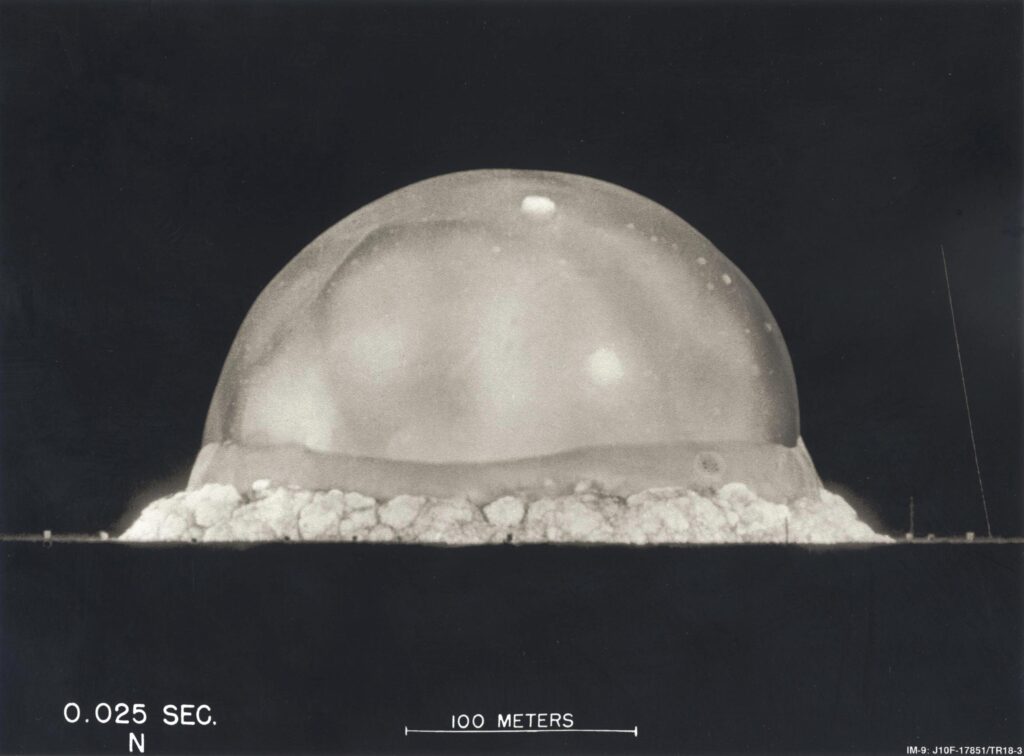
The first nuclear-weapon detonation, code-named Trinity, occurred in the New Mexico desert on July 16, 1945. This photograph shows the explosion 0.025 seconds after detonation.
The End of an Era
In September 1992, less than a year after the Soviet Union dissolved, scientists detonated a bomb called Divider at the Nevada Test Site. It yielded the equivalent of just 20 kilotons of TNT—less than 1% of the explosive power of many megaton-class bombs. That was the last nuclear test to occur in the United States.
Despite having answered the main questions of how to make bombs, many scientists in 1992 still felt that testing was essential. Nuclear weapons were military technologies, but they also had their scientific uses. Chemists had gained a new understanding of the subtle behavior of radioactive elements, and particle physicists had discovered new areas of inquiry that created interest in large-scale colliders. Two elements, fermium and einsteinium, were discovered thanks to nuclear explosions, while concerns about nuclear fallout spurred research into global weather patterns.
By the 1980s, however, nuclear tests tended to focus on smaller design innovations, such as portability. “All of the key secrets about nuclear weapons were discovered a long, long time ago,” says Stephen Schwartz, the former publisher and executive director of the Bulletin of the Atomic Scientists, in a recent interview. “Now we’re just fiddling around the margins.”
In October 1992 Congress approved a bill that placed a short moratorium on nuclear weapons. It was designed as a prelude to a larger agreement, the international Comprehensive Test-Ban Treaty. Now that the Cold War was over, massive nuclear stockpiles seemed excessive—perhaps less a deterrent than a source of conflict. Within a few years, with Russian and American leaders negotiating both arms reductions and a complete ban on testing, it seemed the world had arrived at a new normal. Neither country would build or test nuclear weapons, and each would scale back its stockpiles to a few thousand weapons.
The challenge, of course, was managing the transition to a world with fewer weapons. As of 1989 tens of thousands of weapons were poised and ready in missile silos, bunkers, and military bases. Even as some advocates demanded the destruction of all nuclear weapons, others—such as Colin Powell, then the United States’ highest-ranking military officer—still considered them the “crown jewels” of the U.S. arsenal. The stockpile was at a crossroads. As the nuclear historian Richard Rhodes put it, “The nuclear weapons complex could either reinvent itself or fall apart.”
The arms negotiations of the 1990s were a triumph of diplomacy, but they left big questions unanswered: What would the two super-powers do with their old nuclear weapons? Would existing arsenals serve as a deterrent against nonnuclear countries acquiring nuclear weapons? And how long would stockpiles remain safe and operable if scientists weren’t allowed to test old weapons or build new ones?
The last question has proven the most vexing. The United States has spent many billions of dollars trying to answer it, but the country is still grappling with its aging stockpile.
The Nuclear Stockpile Today
It might seem that maintaining a nuclear arsenal would be easier than designing and testing new weapons. But in practice that’s not the case. The world’s most powerful weapons were not designed for longevity; rather, they were designed to be replaced with more advanced technology down the road. “We assumed that no weapon would remain in the stockpile for more than ten or twenty years,” Younger writes in The Bomb.
The average U.S. nuclear weapon is now 29 years old. Scientists refer to their maintenance strategy as “stockpile stewardship.” In the late 1990s this approach was easy enough. “So many weapons were being dismantled in response to U.S.-Russian arms negotiations that the remaining weapons could be maintained from dismantled parts,” writes Rhodes.
Yet nuclear scientists were already nervous about the prospect of maintaining the weapons in perpetuity. Siegfried Hecker, who was director of the Los Alamos National Laboratory when the Soviet Union collapsed, told Rhodes that he and his colleagues had urgent conversations about how to redesign the nuclear-weapons program. “We’re being asked to take cradle-to-grave responsibility for an incredibly complex mechanism,” Hecker remembered one colleague saying. “And as these weapons age, they change, and now we have to maintain them without testing.”
Currently, the U.S. strategy is to spend generously on upkeep, regularly replacing weapons components that age poorly and monitoring each class of weapons to address emerging problems. Just fewer than 5,000 weapons remain in the arsenal. The active stockpile is made up exclusively, or almost exclusively, of thermonuclear weapons, also known as hydrogen bombs, most of which were designed in the 1970s and 1980s. They cost between $20 billion and $50 billion annually to store, protect, and maintain, depending on who is counting. That’s at least three times the budget of the National Science Foundation.
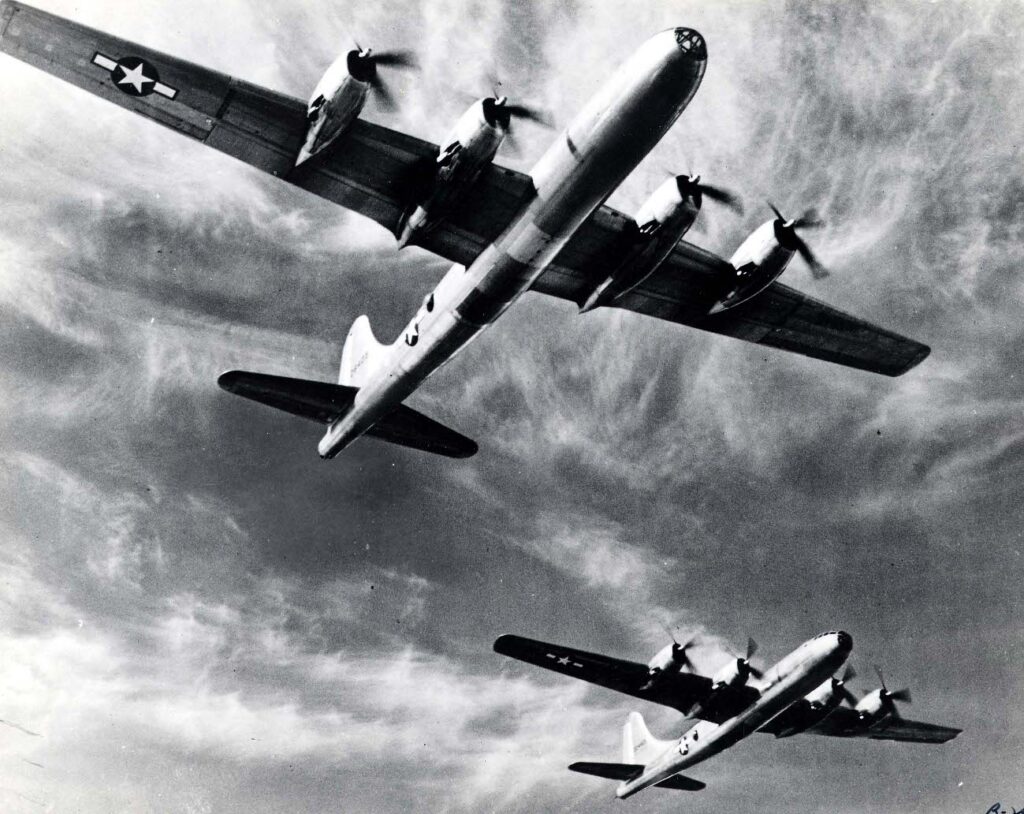
Boeing B-29 Superfortress heavy bombers, similar to the plane Robert Travis flew in.
One crucial task is the replacement of any parts that corrode or degrade, from wiring to metal casings to explosive materials. For instance, the high explosive that detonates a bomb’s nuclear core contains a plasticizer, which allows the explosive to be shaped to direct the bomb’s energy. Over time the plasticizer evaporates, leaving behind a brittle residue that looks a bit like old plastic. To avoid such problems scientists test individual components in the absence of the explosive “physics package” of nuclear weapons. “There is an ongoing refurbishment process for every weapon currently in the active stockpile,” says Schwartz. “At the end of the process the weapons are functionally new.”
But upkeep requires more than the installation of new parts. Many contractors that once built nuclear components have gone out of business. Scientists often have to make replacement parts from scratch. Likewise, certain tools have to be custom-made to dismantle bombs successfully. The original nuclear scientists didn’t design weapons to be taken apart like Ikea furniture. They designed them to have massive firepower and a relatively short life span.
There’s a final piece in the technological puzzle: making sure each updated part works in concert with the others. If you swap out almost every component of an antique machine, how do you know it will work? Scientists have tried to answer this question by studying each component far more closely than they did during the Cold War, using supercomputers to synthesize their knowledge of each process. Although digital models never fully replicate physical processes, they may be the best hope for predicting and addressing the decay of old nuclear weapons.
Only one place in the United States both refurbishes and dismantles nuclear weapons: the Pantex Plant near Amarillo, Texas. But many sites store the weapons. Some warheads are still kept on top of cruise missiles in remote silos, in an echo of Cold War practices. Others are simply clustered behind the armored doors of what look like earth-covered igloos. Only in the event of a major conflict would these weapons be mated with a bomber or missile.
Given that there is only one disassembly location, the relatively high number of weapons storage sites has an unsettling consequence: nuclear weapons have to be constantly transported across the country so that those that need inspections or maintenance at Pantex can rotate in and out of the arsenal. They’re driven in unmarked, heavily armored 18-wheeler trucks. If the components of a nuclear bomb drove by you on the highway, you probably wouldn’t notice it. It would be escorted by armed couriers, but the vehicle itself would simply look like a shipping truck.
In addition to being the place where warheads are reborn, Pantex is the place nuclear cores go to die. It’s easy to think of disarmament as the permanent destruction of nuclear weapons—but it’s not as though concentrated radioactive material can be thrown out like household trash. Thousands of plutonium cores sit in a vast Pantex warehouse. “Those are all in special cans,” says Schwartz. “They look like small oil drums in cages.”
We can’t know for sure that our nuclear arsenal is fully functional. “There are concerns that if you start fiddling too much, you do take the weapon away from what you know works.” says Schwartz. But U.S. nuclear scientists remain fairly confident that they can vouch for the usability of the arsenal. Of course, that will remain true only if the U.S. nuclear program continues to gobble up billions of federal dollars each year to keep itself running.
The Stockpile of Knowledge
Maintaining nuclear weapons isn’t just a technological problem. It’s also an expertise problem. Nuclear science has lost respectability in recent decades. Researchers spend their time trying to make sure weapons don’t break down. They’re no longer trying to solve some of the biggest problems in physics and chemistry. Perhaps as a result the morale of these scientists has gone down and their average age has gone up.
Some of their physical work spaces are in poor shape, too. In 2014 the Los Angeles Times reported that the Pantex Plant was infested with rats, and a concrete ceiling had recently collapsed in a complex that produces nuclear materials in Tennessee. For aspiring scientists and engineers these issues reflect the decline of the study of nuclear weapons as a leading scientific discipline.
Mark Pierson, who leads the nuclear engineering program at Virginia Polytechnic Institute, sees this challenge play out for his students. In the 1950s vast swaths of uncharted territory enticed a whole generation of physicists, chemists, and engineers into nuclear engineering. By contrast Pierson’s students don’t have much interest in working with nuclear weapons. “There’s not a lot of new design going on,” he says. Weapons work tends to focus on reliability and sustainability—essential topics that are unfortunately not very prestigious or well paying.
Pierson himself worked with nuclear weapons for decades: he served on nuclear submarines at the very end of the Cold War. He doesn’t see a very bright future for the nuclear-weapons program. “I think as the decades go by, there will be fewer and fewer people interested in this area. Particularly as we shrink our stockpile.” So as the stockpile continues to age physically, the United States will also lose its stockpile of knowledge and experience.
An Explosive Inheritance
Morale has fallen among military personnel responsible for the country’s nuclear arms as well—perhaps a sign that Americans view nuclear weapons very differently than they once did. In August 2007, 57 years after the plane crash at Fairfield-Suisun, another plane took off carrying a nuclear weapon. This time there weren’t any problems with the plane itself, a B-52 bomber flying from North Dakota’s Minot Air Force Base to Louisiana’s Barksdale Air Force Base. The problem was the utter breakdown of nuclear-weapons regulations.
Barksdale is one of the country’s few remaining hubs of aerial nuclear might. Several years ago the former weapons designer Stephen Younger visited the base. “We were driven along the flight line of aircraft that, parked wingtip to wingtip, stretched more than a mile, a display of strategic might visible from Russian spy satellites,” he writes. Planes there are regularly loaded with inert missiles to run missions that replicate the conditions of a nuclear war. “One could hardly imagine a more vivid demonstration that nuclear weapons are still very much a part of the defense equation.”
The B-52 was scheduled to arrive at Minot, pick up 12 nonnuclear cruise missiles, and relocate them to Barksdale. It was a simple enough procedure. Airmen were expected to confirm that they had the right sets of missiles, load them onto the wings of the plane, and double-check that their payload was secure and inert.
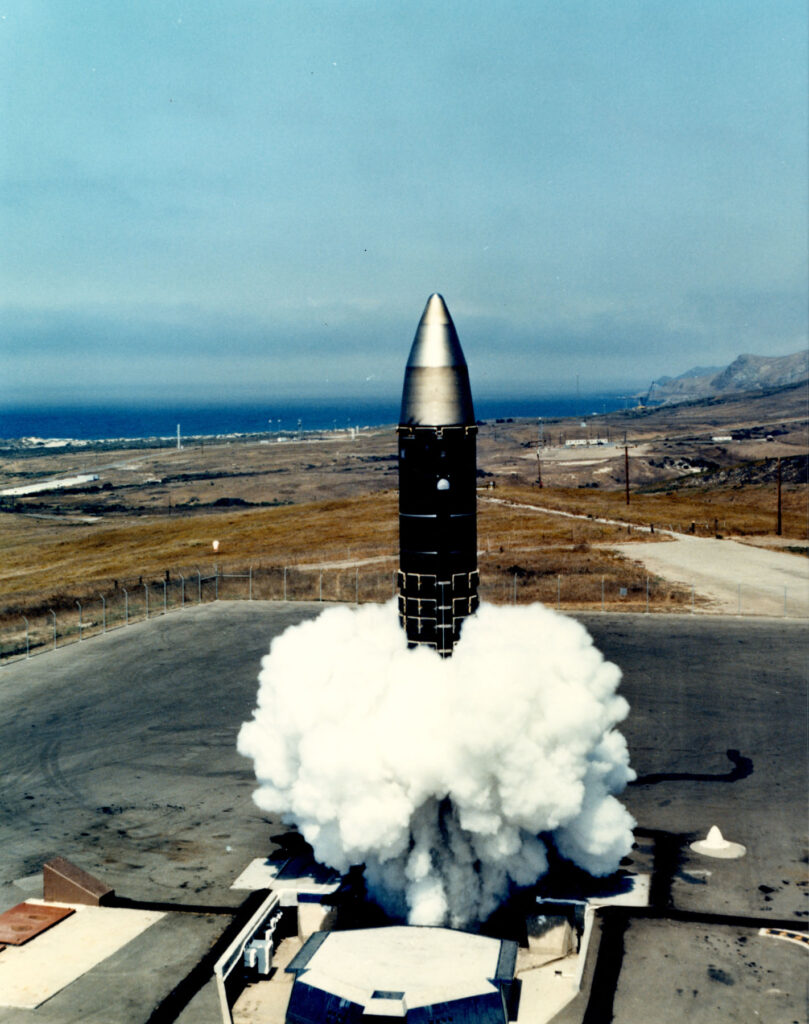
U.S. Air Force test launch of a Peacekeeper intercontinental ballistic missile, all of which have now been decommissioned.
It didn’t work out that way. In a stunning string of errors by air force personnel, the wrong missiles were picked up. Bizarrely, nuclear weapons were stored in the same place as dummy weapons—and despite regulations that required numerous checks on the plane’s payload, six active nuclear weapons were fixed to the wings of the plane. That day they were flown a thousand miles across the country and delivered to Barksdale without the necessary security.
For 36 hours before, during, and after the flight, no one noticed. Not a single person—not the pilot, not the commanders on the ground, not the president of the United States—knew there were nuclear weapons aboard. In the event of an emergency the bomber was even authorized to jettison its payload (although accidental detonation would have been unlikely). Had anyone attempted to locate the weapons during the flight, they would have found that six nuclear missiles had simply vanished from the storage site. Only after landing did the Barksdale convoy crew realize armed nuclear missiles were attached to the wings of the plane.
The case is perhaps a good metaphor for the disappearance of nuclear weapons from the public eye. An investigation into the incident blamed poor morale among personnel and severely weakened regulations when it comes to handling nuclear weapons since the end of the Cold War.
Nuclear weapons don’t seem to create the kind of fear they once did. The generation of military personnel now entering the service was born after the Cold War ended. Perhaps that’s why it has become rare to read about warheads in headlines. Even as nuclear programs like that of Iran attract international attention, we tend to forget about the thousands of nuclear weapons maintained by the world’s last remaining superpower. Those weapons may have lost their huge influence on global politics—but they certainly haven’t lost their immense dangers.
It would take a monumental effort to create a world without nuclear weapons. Even if we decide to dismantle every weapon on Earth, a few would likely go unaccounted for—and concentrated nuclear material could still be used to build warheads again. Nuclear weapons have become a part of the human inheritance.
Yet that doesn’t excuse our failure to choose a coherent strategy for the future. Right now we sit in the awkward middle ground between gradual disarmament and permanent preservation of our nuclear weapons. The costs of nuclear-weapons maintenance are rising, and the benefits of a nuclear stockpile seem to be shrinking. We—as citizens, scientists, and policy makers—need to make a choice. Twenty-five years after the end of the global chess match that was the Cold War, it’s time to end the stalemate.

